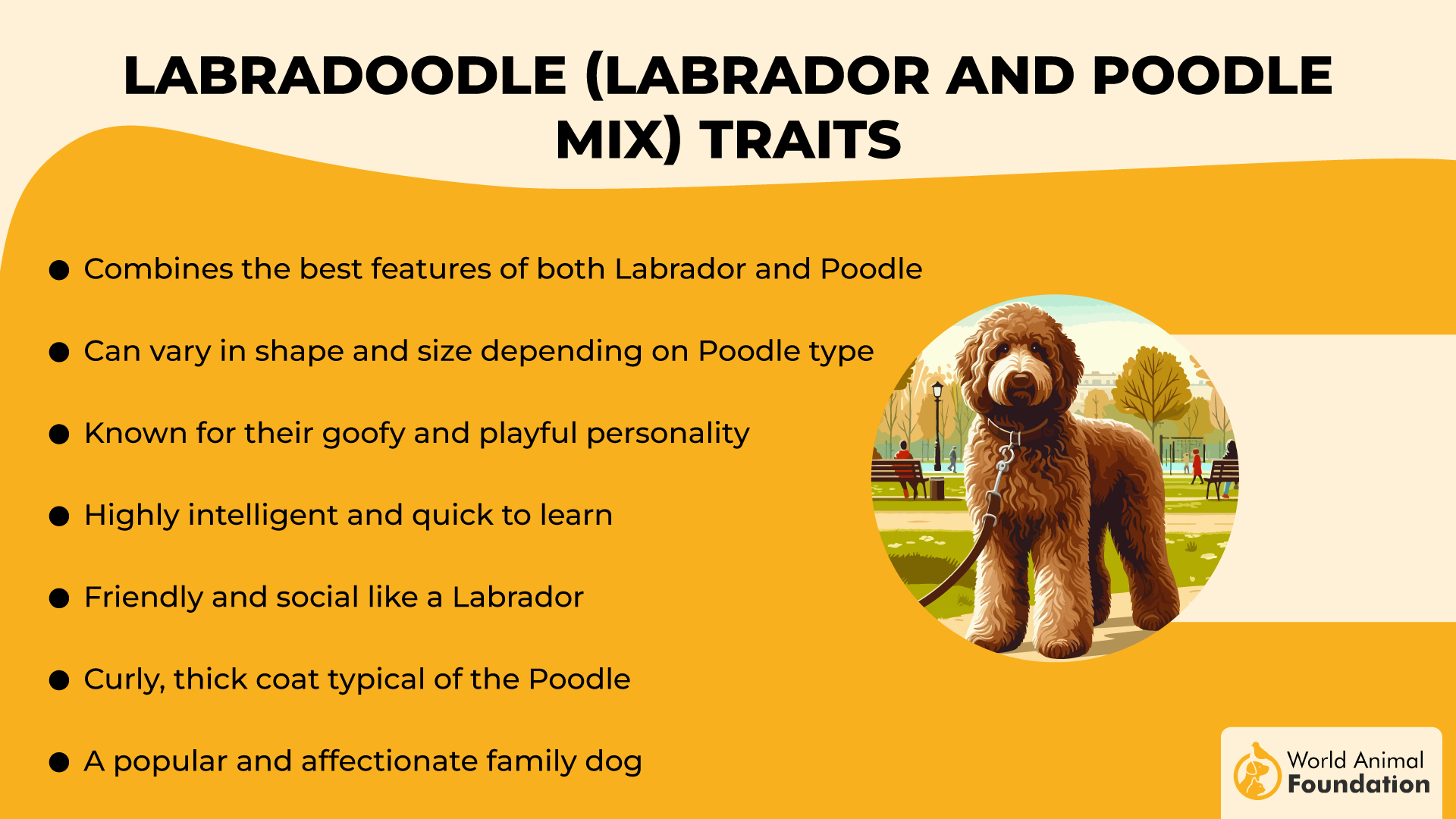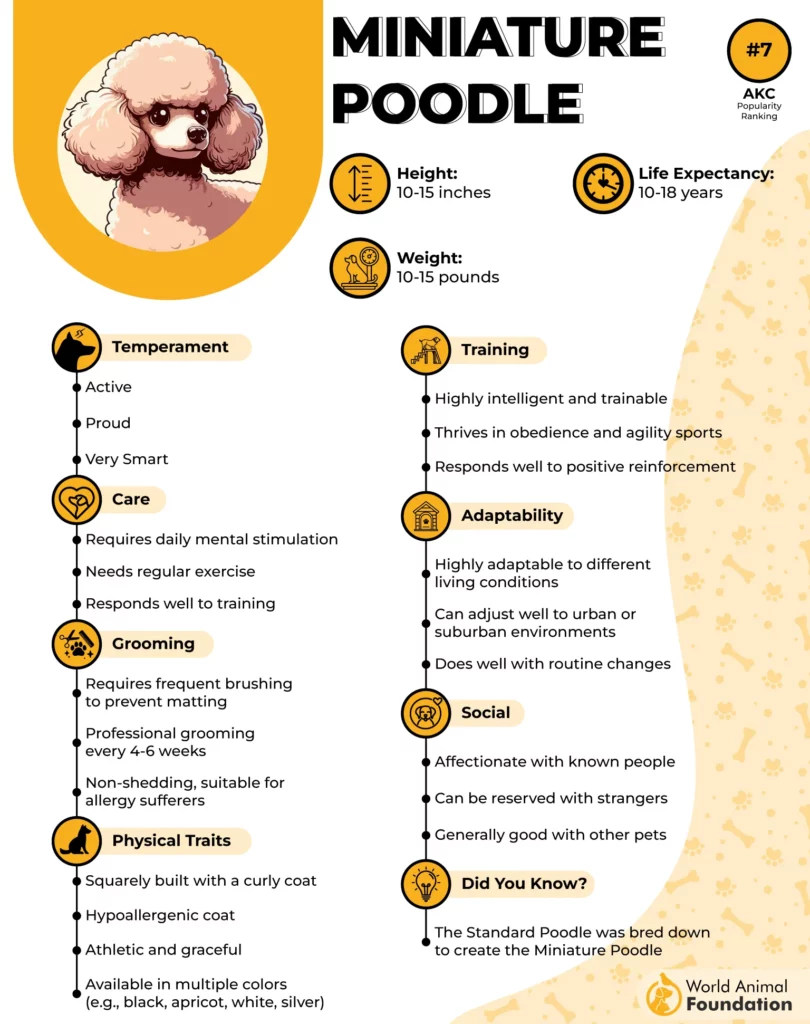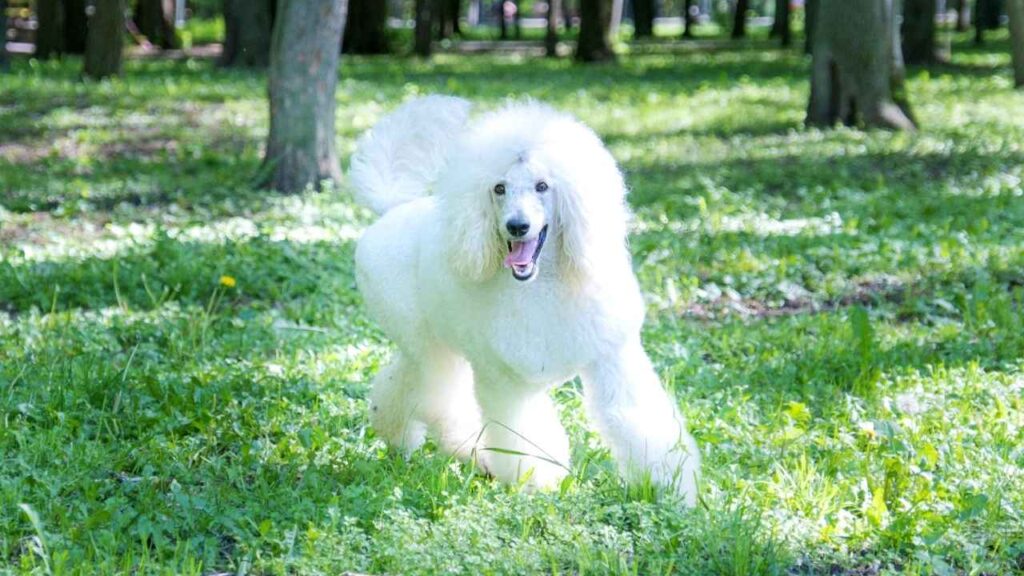Choosing between a Poodle and a Labradoodle can be challenging, as both breeds are intelligent, affectionate, and highly popular. While Poodles are purebred dogs known for their hypoallergenic coats and elegant appearance, Labradoodles are a hybrid mix of Poodles and Labrador Retrievers, combining the best traits of both breeds.
Poodles excel in trainability and low-shedding qualities, making them a favorite among allergy sufferers. On the other hand, Labradoodles inherit the friendly, social nature of Labradors while maintaining the Poodle’s intelligence. However, their coat type can vary, requiring different levels of grooming.
Whether you’re looking for a loyal companion, a family-friendly pet, or an active dog that suits your lifestyle, understanding the differences between Poodles and Labradoodles will help you make the right decision. This guide will compare their characteristics, temperament, and care needs to help you choose the perfect furry friend.
Poodle vs. Labradoodle
Poodles are purebred dogs known for intelligence, elegance, and hypoallergenic coats. They come in three sizes—Toy, Miniature, and Standard—making them versatile for different living spaces. Their curly coats require regular grooming, but they shed very little, making them ideal for allergy sufferers.

Poodles are highly trainable, excelling in obedience and agility, and they form strong bonds with their owners.
Labradoodles are a crossbreed between a Poodle and a Labrador Retriever, combining the intelligence of a Poodle with the friendly and outgoing nature of a Labrador. Their coats can vary from curly to wavy, and shedding levels differ depending on genetics.

Labradoodles are affectionate and sociable, making them great family pets, but they require consistent training and exercise to stay well-behaved.
Both breeds are intelligent, loving, and adaptable, but their needs differ in grooming, energy levels, and temperament. Choosing between a Poodle and a Labradoodle depends on lifestyle, allergies, and the level of care an owner is willing to provide.
Poodle vs. Labradoodle: Height and Size
Poodles come in three sizes: Toy, Miniature, and Standard, offering a wide range of choices for potential dog owners. Petplan suggests that toy poodles stand around 10 inches tall and weigh between 4 and 6 pounds, making them ideal for apartment living.
Miniature Poodles grow to about 10-15 inches in height and weigh 10-15 pounds, striking a balance between small and medium-sized dogs. Standard Poodles are the largest, reaching 18-24 inches in height and weighing 40-70 pounds.

Labradoodles vary in size depending on their Poodle parent, with three main categories: Miniature, Medium, and Standard. Miniature Labradoodles typically stand 14-16 inches tall and weigh 15-25 pounds, while Medium Labradoodles reach 17-20 inches in height and weigh 30-45 pounds.

Standard Labradoodles are the largest, growing between 21-24 inches tall and weighing 50-65 pounds.
Poodle vs. Labradoodle: Coat Texture and Type
Poodles are known for their dense, curly, hypoallergenic, and low-shedding coats, making them a fantastic companion for allergy sufferers. Their hypoallergenic coats make them one of the most lovable breeds, recognized by the American Kennel Club for their breed standards.
Originally bred as water retrievers, Poodles’ tight curls help trap dander and loose hair, reducing allergens compared to other breeds. However, maintaining their coat requires professional grooming every 4-6 weeks and daily brushing to prevent matting. These highly intelligent dogs come in various colors, including black, white, apricot, and gray, offering dog owners plenty of aesthetic choices.

Labradoodles share many qualities as Poodles, inheriting coat traits from both Poodle and Labrador Retriever parents. This hybrid breed, particularly the Australian Labradoodle, is known for its teddy bear-like appearance and soft, wavy, or curly coat. Some Labradoodles shed minimally, while others may shed more depending on genetics, with those being preferred as hypoallergenic guide dogs.
Regular brushing is essential to maintain coat health, especially for active families who love spending quality time outdoors. Many breeders aim to produce Labradoodles with low-shedding coats to ensure they remain wonderful companions for allergy-sensitive family members.
Poodle vs. Labradoodle: Guarding and Protective Traits
Poodles, despite their elegant and friendly nature, have strong protective instincts and can make excellent watchdogs. Their intelligence and natural alertness allow them to recognize unusual activity and bark to warn their owners quickly. Standard Poodles, in particular, have the same qualities as other highly aware breeds, making them reliable guard dogs without being overly aggressive.

With proper mental stimulation and daily exercise, they remain well-mannered yet highly responsive to potential threats. Though they are not naturally territorial, their incredibly loyal nature ensures they protect their family members when necessary.
Labradoodles, on the other hand, are generally more social and trusting. Labradoodles share the Labrador Retriever parent’s friendly nature. While they may bark at unfamiliar noises, their youthful exuberance and quick learners’ mindset make them more suited for companionship than guarding.

However, with proper training, these two breeds can develop stronger protective instincts, as their high intelligence allows them to pick up new tricks and commands efficiently. While not as naturally cautious as Poodles, Labradoodles can still be watchful, especially with consistent mental stimulation and physical activity.
Poodle vs. Labradoodle: Health
Poodles are generally healthy dogs but prone to certain health issues. As per PDSA, some common health problems include hip dysplasia, progressive retinal atrophy (PRA), and Addison’s disease, which can affect their overall well-being.
Due to their deep chests, Standard Poodles may also be at risk for bloat, a serious and potentially fatal condition. Regular vet check-ups, a balanced diet, and an active lifestyle that includes at least an hour of exercise, such as a long walk or playing fetch, can help maintain their health.

Labradoodles inherit health traits from their Poodle and Labrador Retriever parents, making them susceptible to similar health issues. As per PetMD, this breed is more prone to hip dysplasia, PRA, and eye diseases, common concerns, and ear infections caused by their floppy ears trapping moisture.
Some Labradoodles may also develop allergies or skin conditions, requiring regular grooming and preventive care. Ensuring they maintain a healthy weight, engage in daily physical activity, and receive routine veterinary care can help reduce the risk of serious health problems.
Poodle vs. Labradoodle: LifeSpan and Longevity
Poodles are known for their impressive lifespan, with Toy and Miniature Poodles often living between 14-17 years and Standard Poodles averaging around 12-15 years. Their longevity is largely attributed to genetics. Proper maintenance plays a crucial role in their life expectancy.
Smaller Poodles tend to enjoy a longer lifespan than their larger counterparts. A nutritious diet, regular exercise, and routine veterinary check-ups can help extend their lifespan and ensure they remain active throughout their years.
Labradoodles tend to have a lifespan of 10-14 years, depending on their size and genetic background. Miniature Labradoodles, like their Poodle ancestors, often live longer than Standard Labradoodles, with some reaching 15 years or more. Their hybrid vigor, resulting from mixed breeding, may contribute to good health, but they are still susceptible to inherited conditions from their parent breeds.

Australian breeders often focus on improving the breed’s overall health and longevity. A well-balanced diet, consistent exercise, and preventive healthcare are essential to increase their life expectancy and ensure the resulting puppies grow into strong, healthy companions.
Conclusion
Both Poodles and Labradoodles are intelligent, affectionate, and versatile dogs, making them excellent choices for different types of owners. With their intelligence and hypoallergenic coats, Poodles are well-suited for those looking for a highly trainable and low-shedding companion. Their energy levels require regular exercise and mental stimulation, making them fit for active households.
On the other hand, Labradoodles inherit wonderful traits from both parent breeds, offering a balance of playfulness and affection. While they may not be as hypoallergenic as Poodles, they are still popular for families seeking a friendly and social pet.
Both breeds have the potential to excel as service dogs thanks to their intelligence and eagerness to learn. Compared to other dogs, Poodles and Labradoodles stand out for their adaptability, making them fantastic companions for various lifestyles.


